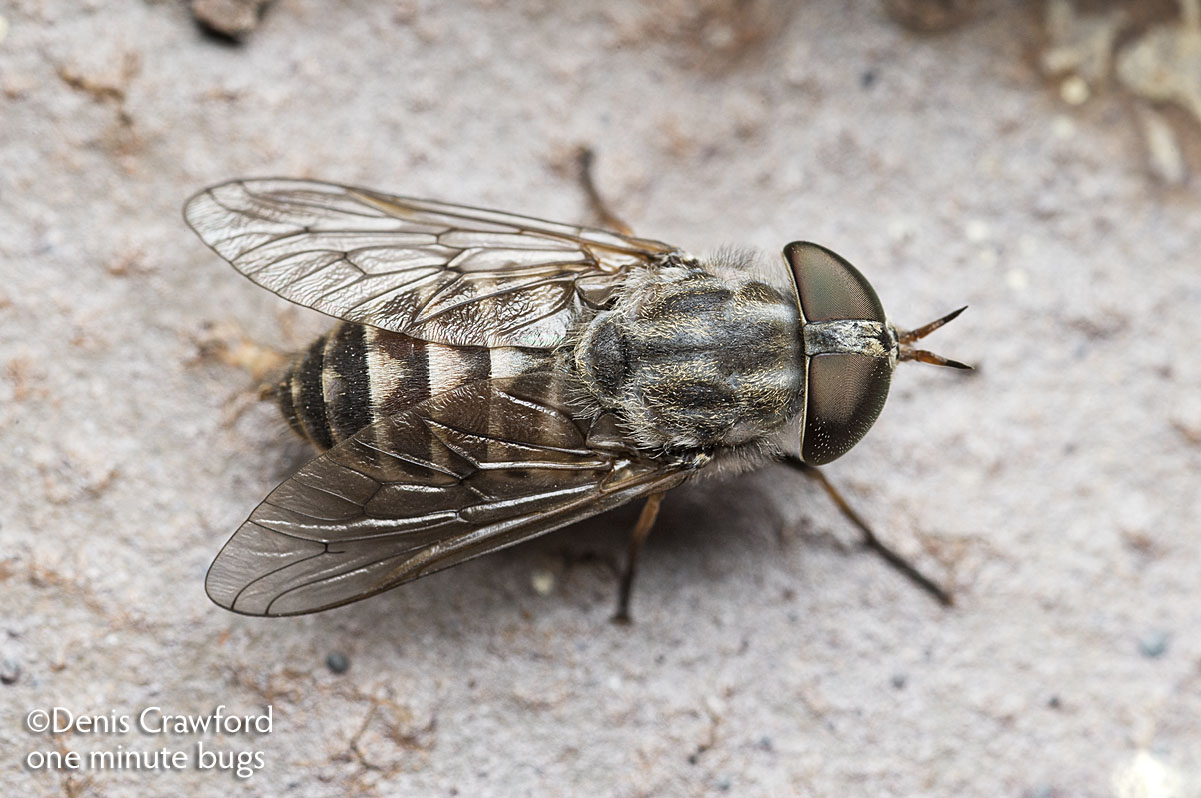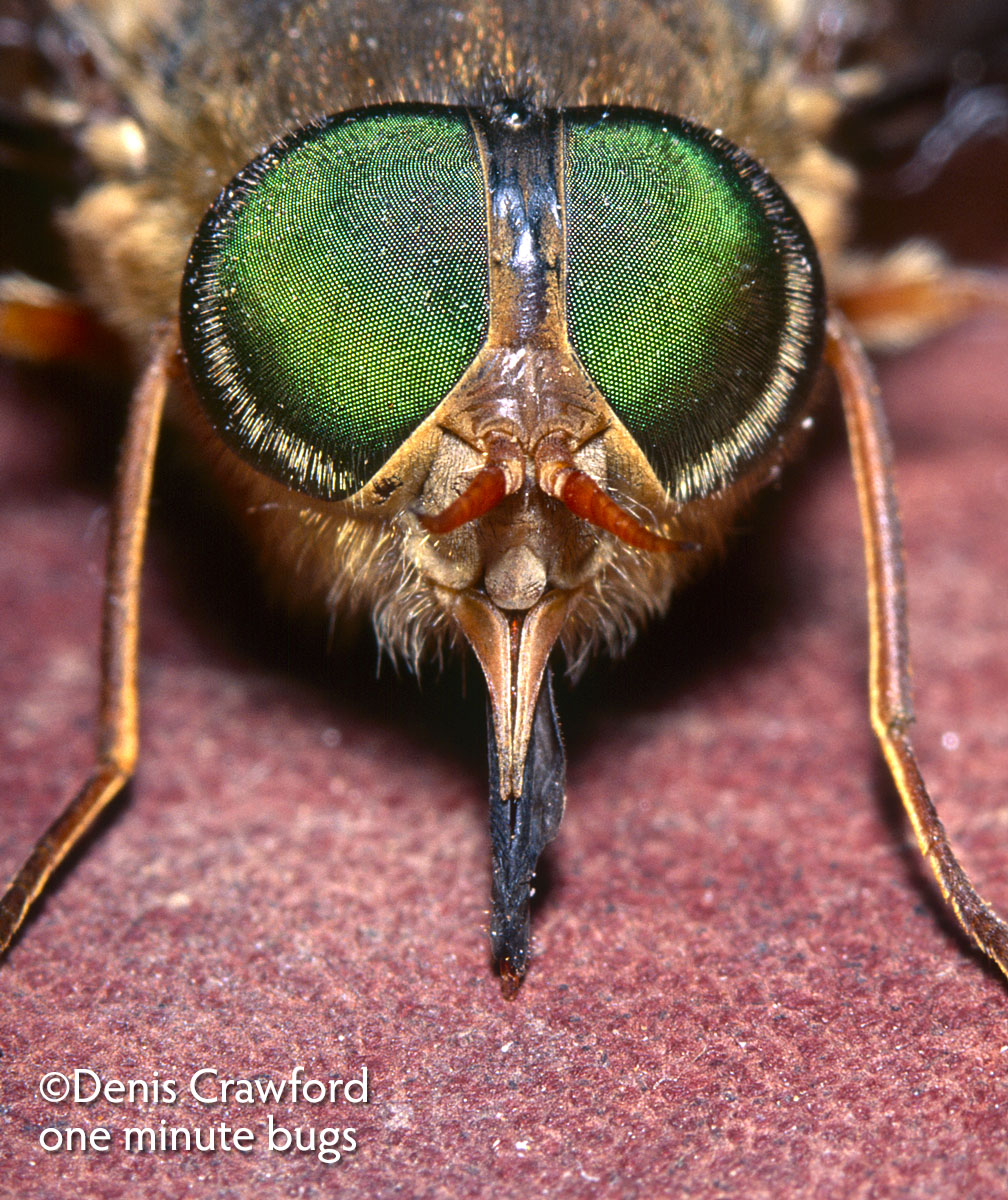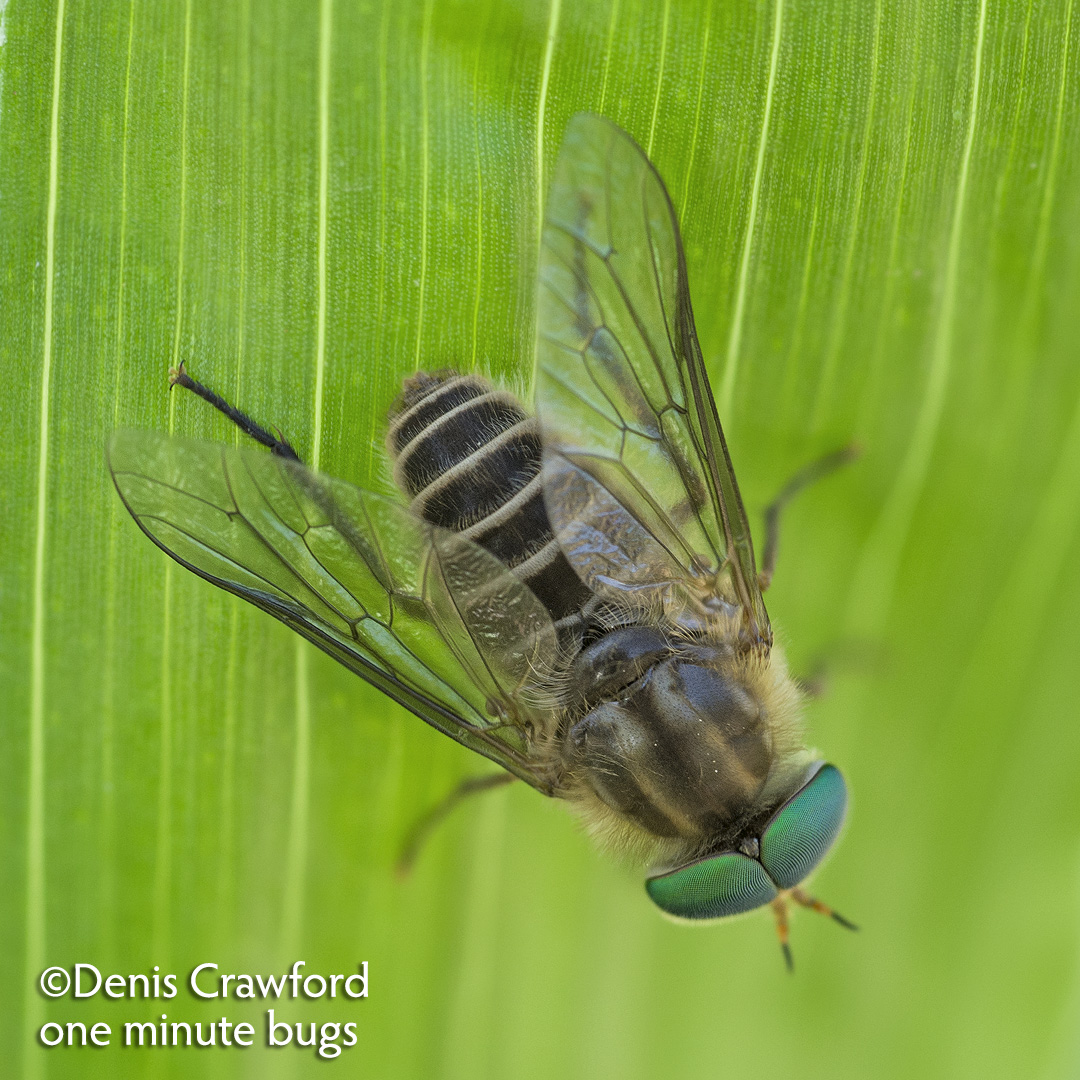Most Australians are very familiar with the insects known as March flies. In temperate Australian zones these flies are commonly encountered over the warmer months of the year, and are unwelcome guests on many camping holidays! Tropical species may occur at any time of the year. In other words March flies don’t appear exclusively during the month of March.

Perhaps the common name stems from the March flies of the northern hemisphere which may arrive during the northern spring (i.e. around March). Unfortunately those northern hemisphere March flies are in a different family (Bibionidae). I include a picture of an Australian bibionid fly (Dilophus sp.) below. As you can see it doesn’t look anything like an Australian March fly. The March flies we know are members of the family Tabanidae, and we have about 400 species of tabanid flies here in Australia.

Australian March flies are notorious for their painful bite, and some species are pests of livestock which gives rise to another common name for them – ‘horse flies‘. Male March flies don’t bite, they feed on nectar. It’s only the females that feed on blood, they need the protein to lay fertile eggs. There are some March flies (both male and female) that never feed on blood – they only feed on nectar. The beautiful Scaptia auriflua is one of those – just click this link to learn more about those.

Hows that for a proboscis (above)? No wonder it hurts. Female March flies puncture the skin with the spike you can see at the tip of the proboscis, and then mop up the blood with spongy mouthparts. They don’t suck blood like mosquitoes do. March flies tend to be fairly slow, especially when they have landed on your skin for a blood meal. They do a fair bit of investigating of the skin before inserting their spike, and are easily swatted away.
The larvae of common March fly species usually occur in damp soil, vegetation in swamps, and in river mud, where they prey on other insects. Adult March flies are themselves preyed on by other insects such as robber flies, reptiles such as skinks, and birds. They may be annoying to us (and in the case of some overseas species spread diseases) but they are part of the environment we live in. This post was inspired by the beautiful March fly below (I’m not sure of the species) that I found in my vegetable garden just the other day.

Most interesting Dennis and some great macros!!
What lens are you using?
Cheers
Thanks Glen. Mostly Nikon 105 and 200mm macro.
Wow, I’ll pay a bit more respect to the next March Fly that tries to bite me, in the microsecond before I swat it!
Haha. Thanks Anthea!
We live in the Dandenong Ranges outside Melbourne and suffer the proboscis thrusts of these flies around this time of year. Thank you for a very interesting and informative article.
Thanks Barry!
I really enjoy your posts Denis! Keep up the great work. 🙂
Nice of you to say so Sam!
Oh yes, I’ve had plenty of bites, and there’s a beach I visit in Victoria which plays host to big buyers which my dog hates!
That said, I still think they are amazing creatures in their design.
Love your images.
Thanks Annie, much appreciated!